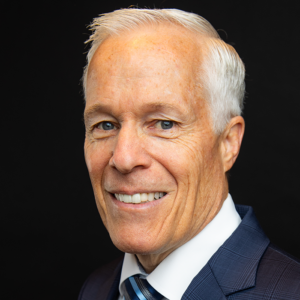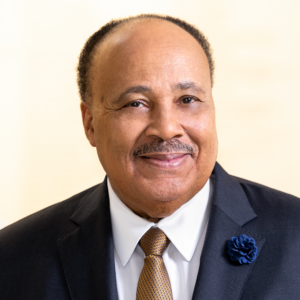Employee Recognition Programs

Employee Recognition Programs
Managing the delicate balance in delicate times
Everything about employment is tough these days. Choosing the right person. The unpredictability of economic and competitive conditions and how they might prompt reductions in staff. Not the least of employment problems is holding on to really productive employees who, frankly, are just as employable elsewhere. The term human resources has never been more profound, and its’ significance in a global economy will only grow.
What makes the matter more delicate is the awkwardness of focusing on tenure in a time of frequent lay-offs. Employees of a company that has suffered a lay-off may dismiss a program that cites the few employees who lasted decades with the firm. Tenure and performance are not the same thing.
Nonetheless, employees make career choices based on their perceptions and intuitions. A 2003 Gallup poll reported that 61% of employee surveyed reported that they hadn’t received any meaningful positive attention in the past year. Another study indicated that 53% of employee respondents left an employer due to lack of incentives or lack of recognition and praise.
One Harvard study outlines the service profit chain, their term for the connection between employee satisfaction and customer service, and customer service’s relationship to profits. For example, Taco Bell found that 20% of the stores with the lowest turnover rates enjoy double the sales and 55% higher profits than the 20% of stores with the highest employee turnover rates.
Failing to recognize employee performance – the dollars and sense of it
Most organizations greatly under-estimate the costs of employee turnover. Consultants Bliss & Associates have extensively studied these costs, both the obvious ones and less conspicuous ones, in their Turnover Cost Projection Model. The Bliss model includes four categories of turnover cost: 1) costs due to the person’s leaving, 2) hiring costs, 3) training costs, and 4) lost productivity costs.
A human resources website called HR.com estimates it costs two to three times more to replace a worker than to retain the employee. Bliss estimates the cost of replacing a departing employee begins at 150% of his or her salary. Do the math: consider the added value of reducing turnover by, say, 25% and putting that savings into revenue producers.
Employee turnover can no longer be viewed as an uncontrollable reality of running a business, flippantly dismissed with statements such as “hey, we can’t do anything about … employees leave and that’s that.” Some organizations have low turnover even in tough economic conditions. Why? Perhaps such firms have analyzed their turnover costs and seen the impact on the bottom line.
How good employee recognition programs work – can your company do it?
Employees work best if given concrete goals and objectives that they and their supervisors can both measure and manage. Clear, understandable criteria for recognition are important.
Understand each employee’s ‘hot buttons.’ What motivates 19-year-old part-timers struggling to pay tuition isn’t what a full-time career track store manager or line manager views as recognition.
Successful employee recognition programs allow for multiple winners.
Successful recognition awards are often individual surprises rather than multiple awards saved for an announced event. Instead of employees focusing on winning an award, they are focused on just doing well at their jobs.
All employees at all levels should be recognized for good work, including supervisors and managers.
Successful programs don’t have to be elaborate and complicated to work. Once criteria are set and recognition awards match employee values, the administration can and should be simple.
Versatile recognition programs include tangible and intangible awards for all types of employee successes, from concrete and visible contributions to subtle influences on the company’s successes.
To be effective, acts of employee recognition should come from the managers who hire, fire, appraise, coach, and correct employees on a daily basis. Recognition programs can’t be left to top executives at boring monthly meetings.
Top executives who offer simple, verbal expressions of gratitude are recognizing employee performance with as much impact as physical rewards offer.
How employee recognition programs go wrong – are these too familiar?
The Wall Street Journal wrote about employees’ recognition experiences. “Employee-reward programs can be so unrewarding. The plaques, tchotchkes with logos, goofy contests and ham-handed presentations tend to backfire. It’s not that they’re all bad, but too often they seem like empty gestures supported by upper management, administered by less-than-enthused middle management, and received by underwhelmed staffers. All when an honest thanks would have gone further.”
Employee of the Month programs that fail: EOM is a popular form of recognition. Effectiveness, however, is another issue. EOM programs typically violate every principle of recognition and positive reinforcement. They don’t precisely identify what must be done to get the award. Consequently, choosing the winner becomes a guessing game management grudging plays at the end of staff meetings. Equally important, EOM programs do not recognize model performance immediately, but arbitrarily await the first of the month when the significance of the performance has faded from memories. But the biggest failing of EOM is that only one employee wins. Ask yourself this: Does your firm have only one model employee each month and the rest are losers? Any employee recognition system that recognizes only one person’s success and limits everyone else’s success is a bad system.
Cash doesn’t work: Employee recognition seeks to spotlight good performance so that other employees get the hint and model it. Recognition must have showcase value; cash becomes invisible very fast.
Tenure versus performance: Focusing on tenure – service awards — has drawbacks in uncertain times. Awarding good work and high productivity, however, is a program for everyone, including new hires.
Confusing recognition with compensation: Because salary increases are invisible and private, they have little showcase value. Compensation is a given, not a trophy.
Employee recognition, however, must run on different assumptions and goals. Recognition is a thank you. Research shows that employees value the admiration of colleagues and superiors and seek recognition for good work. That’s how recognition programs create role models throughout the firm. Programs that publicly spotlight employee accomplishments have trophy value.
Confusing recognition with incentives: Philip Holmes asserts that recognition and incentives are not interchangeable concepts. Recognition programs seek to spotlight employees who perform well. Incentive programs seek to induce people to achieve a specific objective, such as increase sales.
Individuals differ: Some employees crave public recognition; others shun it. Employee recognition is complex, requiring knowledge of the psychology of motivation as well as each employee’s sensitivities. A recognition program that employees perceive as an expectation – a given — rather than an aspiration will collapse into its own naïve psychology.
Myopic perceptions: What management views as reinforcing is not how everyone else views it. Not everyone is a sports nut. Not everyone drinks wine. Most people already have watches, clocks, folders, pens, hats…and t-shirts hanging out of drawers. Gather many viewpoints for program development.
Employee recognition program successes – could these ideas work for you?
Successful employee recognition programs use unique incentives to change workplace culture:
Accumulated points used for merchandise redemption in an incentive catalog
Gift certificates, dinner certificates, movie and athletic tickets
Performance cards that, once filled, can be redeemed for rewards
Supervisors issue “on the spot” recognition chits for small acts of customer services that employees can redeem for merchandise.
One expert, John Domenick, developed seven steps for setting up an effective recognition system, starting with the identification of key business results that would be improved by a more motivated and content workforce. He asserts that a firm’s recognition policies and procedures should be as organized and complete as the firm’s sales plan, benefits package…and disciplinary system.
Some case histories – could you join this list?
Restaurant chain’s repeat business rises 53%: This chain’s decline in repeat customer sales needed immediate attention. The solution: A program that engaged employees more actively in customer service. Managers used ‘customer care currency’ to reward employees on the spot for customer care behaviors. Repeat sales improved 43% during just the first three months of this program.
Mortgage firm cuts processing time by four days: Interest rate changes greatly affect loan center operations. Rushes stress out employees. The solution: Train employees in all aspects of the loan process, rather than just one facet, to enhance teamwork. A recognition program started rewarding both individuals and teams for meeting application-closing objectives. Overall loan processing times improved by more than four days. The firm gained substantial market share in a very competitive market.
Big banks lose career employees to small community bank: Larger banks can offer substantial benefit packages to employees, making it difficult for one community bank to attract and retain qualified employees. The solution: An employee recognition program that rewards employees in all departments and job functions for both years of service and for the achievement of monthly objectives. The community bank gained from better-educated employees who also became interested in careers at the bank.
Small retailer gets his life back: A local retail owner thought he would never have a life outside his business. He could not afford the wages and benefits necessary to hire employees who would last beyond three months. The solution: Use non-cash forms of employee recognition to recruit and retain employees. Employees were rewarded for referrals of qualified employees who stayed more than three months. Daily recognition rewards were issued for being on time, for opening the store in the owner’s absence, and for outstanding customer service. Employee retention increased during the first six months. The owner’s store became identified locally as ‘the best place to work.’
How to get started
Employee recognition programs need delicate construction. Poorly designed programs appear half-hearted or silly to employees. The psychology of self-esteem and motivation is complex. A rich body of corporate ‘best practices’ is available. Starting without such knowledge will almost surely lead to pitfalls that could have been avoided.
But starting from scratch isn’t necessary. An employee recognition program professional can show you how to set up a program nearly free of administrative hassles and record keeping.
For more information contact:
Bob Dawson, CITE
Director
The Business Group, Inc.
(916) 415-1384
www.businessgroupinc.com
We hope you found this article about “Employee Recognition Programs” helpful. If you have questions or need expert tax or family office advice that’s refreshingly objective (we never sell investments), please contact us or visit our Family office page or our website at www.GROCO.com. Unfortunately, we no longer give advice to other tax professionals gratis.
To receive our free newsletter, contact us here.
Subscribe to our YouTube Channel for more updates.

Alan Olsen, is the Host of the American Dreams Show and the Managing Partner of GROCO.com. GROCO is a premier family office and tax advisory firm located in the San Francisco Bay area serving clients all over the world.
Alan L. Olsen, CPA, Wikipedia Bio

GROCO.com is a proud sponsor of The American Dreams Show.

The American Dreams show was the brainchild of Alan Olsen, CPA, MBA. It was originally created to fill a specific need; often inexperienced entrepreneurs lacked basic information about raising capital and how to successfully start a business.
Alan sincerely wanted to respond to the many requests from aspiring entrepreneurs asking for the information and introductions they needed. But he had to find a way to help in which his venture capital clients and friends would not mind.
The American Dreams show became the solution, first as a radio show and now with YouTube videos as well. Always respectful of interview guest’s time, he’s able to give access to individuals information and inspiration previously inaccessible to the first-time entrepreneurs who need it most.
They can listen to venture capitalists and successful business people explain first-hand, how they got to where they are, how to start a company, how to overcome challenges, how they see the future evolving, opportunities, work-life balance and so much more..
American Dreams discusses many topics from some of the world’s most successful individuals about their secrets to life’s success. Topics from guest have included:
Creating purpose in life / Building a foundation for their life / Solving problems / Finding fulfillment through philanthropy and service / Becoming self-reliant / Enhancing effective leadership / Balancing family and work…

MyPaths.com (Also sponsored by GROCO) provides free access to content and world-class entrepreneurs, influencers and thought leaders’ personal success stories. To help you find your path in life to true, sustainable success & happiness. It’s mission statement:
In an increasingly complex and difficult world, we hope to help you find your personal path in life and build a strong foundation by learning how others found success and happiness. True and sustainable success and happiness are different for each one of us but possible, often despite significant challenges.
Our mission at MyPaths.com is to provide resources and firsthand accounts of how others found their paths in life, so you can do the same.
Faith, Freight & “Slaying the Tomb”
How the Moscrips Drove From Freight Tech to Faith-Fueled Media When Scott Moscrip launched Truckstop.com from a spare bedroom in 1995, he didn’t just build a freight-matching marketplace—he rewired a blue-collar industry for the Internet age. Thirty years, five kids, and one mayoral term later, the Idaho technologist and his wife, Carmen, are chasing an…
From the Streets to Self-Reliance
How Joseph Grenny’s Other Side Village Is Rewriting the Homelessness Playbook A 2 a.m. Alarm and a Box of World-Class Doughnuts At two o’clock each morning in downtown Salt Lake City, former rough-sleepers slip into spotless aprons, fire up industrial mixers, and begin turning out pillowy brioche rings glazed with passion-fruit icing and drizzled…
Building a Legacy: A Fireside Chat with Martin Luther King III
In a thought-provoking fireside chat at our Legacy Builder’s Conference, Martin Luther King III shared profound insights on the concept of legacy, leadership, and the moral imperatives facing society today. Speaking with Alan Olsen, he reflected on his father’s enduring impact and his own efforts to carry forward that mission in today’s world. Defining His…
Turning Ordinary Lives into Living Legacies
“There was a measurable connection between how well they knew their family stories and how successful they were.” — Kasia Flanagan, founder of Everyday Legacies When historian‑turned‑biographer Kasia Flanagan examined the lives of mixed‑race German‑Samoan descendants for her PhD, she expected to chart migration patterns and cultural shifts. What she didn’t expect was the data point that changed her career:…




